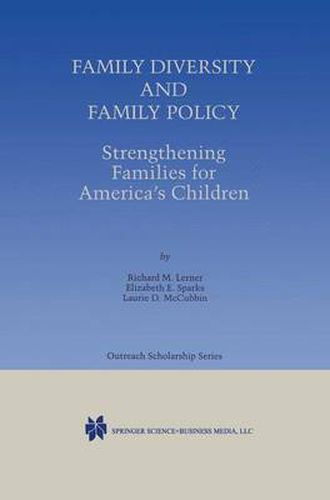Readings Newsletter
Become a Readings Member to make your shopping experience even easier.
Sign in or sign up for free!
You’re not far away from qualifying for FREE standard shipping within Australia
You’ve qualified for FREE standard shipping within Australia
The cart is loading…






This title is printed to order. This book may have been self-published. If so, we cannot guarantee the quality of the content. In the main most books will have gone through the editing process however some may not. We therefore suggest that you be aware of this before ordering this book. If in doubt check either the author or publisher’s details as we are unable to accept any returns unless they are faulty. Please contact us if you have any questions.
This text describes the dimensions of diversity which characterize the contemporary American family and discusses the implications for public policy and associated intervention programs linked to this diversity. The authors contend that if the programs and policies available to support families are to be most useful, they need to reflect the diversity of the families they intend to help. Beginning with a discussion of the historical and contemporary context of the American family, the text focuses on child poverty and argues that this topic may be studied within the context of developmental systems theory. This theory systematically links the development of individuals to variations in their physical and social ecology, and is used as a framework for discussing: contemporary challenges faced by parents charged with rearing adolescents, and the familial and societal issues that arise when the adolescents being reared are parents themselves; current policy issues that arise from welfare debates in the USA and from recently-enacted welfare reform legislation; and the importance for our nation of developing a comprehensive national youth policy. The authors draw implications for the design, delivery and evaluation of diversity-sensitive policies and programs for families and youth, and offer a vision of how to link scholars, policy makers, and community members in multi-professional and multi-institutional collaborations promoting the positive development of American families and youth. This text is relevant to scholars and policy makers interested in human development, particularly of children and adolescents. In addition, it should be essential reading for practitioners and policy makers in government, private industry, and public and private social service organizations.
$9.00 standard shipping within Australia
FREE standard shipping within Australia for orders over $100.00
Express & International shipping calculated at checkout
This title is printed to order. This book may have been self-published. If so, we cannot guarantee the quality of the content. In the main most books will have gone through the editing process however some may not. We therefore suggest that you be aware of this before ordering this book. If in doubt check either the author or publisher’s details as we are unable to accept any returns unless they are faulty. Please contact us if you have any questions.
This text describes the dimensions of diversity which characterize the contemporary American family and discusses the implications for public policy and associated intervention programs linked to this diversity. The authors contend that if the programs and policies available to support families are to be most useful, they need to reflect the diversity of the families they intend to help. Beginning with a discussion of the historical and contemporary context of the American family, the text focuses on child poverty and argues that this topic may be studied within the context of developmental systems theory. This theory systematically links the development of individuals to variations in their physical and social ecology, and is used as a framework for discussing: contemporary challenges faced by parents charged with rearing adolescents, and the familial and societal issues that arise when the adolescents being reared are parents themselves; current policy issues that arise from welfare debates in the USA and from recently-enacted welfare reform legislation; and the importance for our nation of developing a comprehensive national youth policy. The authors draw implications for the design, delivery and evaluation of diversity-sensitive policies and programs for families and youth, and offer a vision of how to link scholars, policy makers, and community members in multi-professional and multi-institutional collaborations promoting the positive development of American families and youth. This text is relevant to scholars and policy makers interested in human development, particularly of children and adolescents. In addition, it should be essential reading for practitioners and policy makers in government, private industry, and public and private social service organizations.